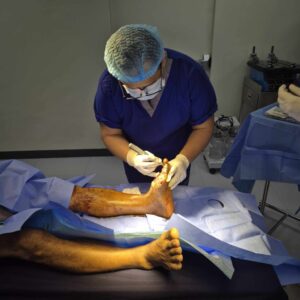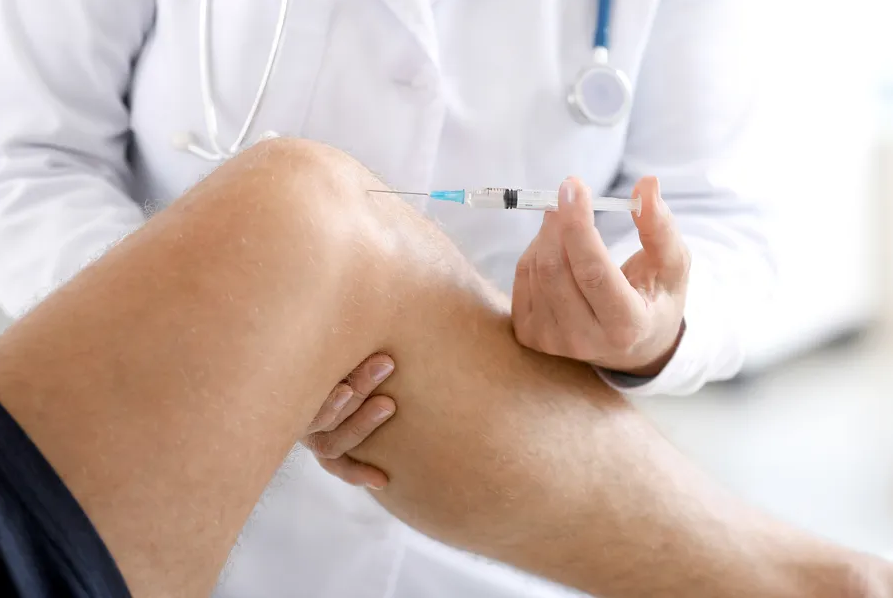Joint pain caused by osteoarthritis and other degenerative conditions can significantly affect mobility and quality of life. Many patients look for effective non-surgical options before considering more invasive treatments. Hyaluronic Acid Injection has emerged as a trusted solution that helps restore lubrication in the joints, reduce pain, and improve movement. This step-by-step guide explains what patients can expect during the procedure and why Tec Orthopedics is the best choice for safe and professional treatment.
What is a Hyaluronic Acid Injection?
Hyaluronic acid is a natural substance found in the body, primarily in the joints, where it acts as a lubricant and shock absorber. As people age or when joint conditions such as osteoarthritis progress, hyaluronic acid levels decrease, causing stiffness and pain. A Hyaluronic Acid Injection introduces this vital fluid back into the joint, enhancing lubrication and allowing smoother movement. This treatment is commonly used for knee osteoarthritis but can also be applied to hip, shoulder, and ankle joints.
Benefits of Hyaluronic Acid Injection
Patients often choose a Hyaluronic Acid Injection because it offers several benefits without the need for surgery. It improves joint lubrication and cushions the affected area, reducing pain during daily activities. Many patients experience better mobility, allowing them to return to walking, exercising, or working with less discomfort. Another advantage is that it can delay or reduce the need for joint replacement surgery. Tec Orthopedics emphasizes the effectiveness of this treatment, providing patients with personalized care to ensure maximum results.
Preparing for a Hyaluronic Acid Injection
Before undergoing the procedure, patients meet with an orthopedic doctor for a thorough evaluation. The doctor reviews medical history, medications, and allergies to ensure the injection is safe and suitable. At Tec Orthopedics, specialists carefully guide patients on pre-procedure instructions, such as avoiding blood-thinning medications if advised, wearing comfortable clothing, and planning for a short recovery time after the session. Proper preparation helps the procedure go smoothly and minimizes potential side effects.
Step-by-Step Guide to the Procedure
Step 1: Consultation and Assessment
The process begins with a detailed consultation. The orthopedic specialist performs a physical examination and may request imaging tests like X-rays to confirm the diagnosis. Tec Orthopedics ensures every patient’s condition is fully evaluated to determine if a Hyaluronic Acid Injection is the right choice.
Step 2: Preparing the Injection Site
Once confirmed, the injection site is thoroughly cleaned and sterilized to prevent infection. In some cases, a local anesthetic is applied to make the procedure more comfortable.
Step 3: Injection of Hyaluronic Acid
The Hyaluronic Acid Injection is carefully administered into the joint. Some clinics may use ultrasound guidance to ensure precise placement. Patients may feel mild pressure or discomfort, but the process is usually quick. At Tec Orthopedics, experienced specialists use advanced techniques to provide accurate and safe injections.
Step 4: Post-Injection Monitoring
After the injection, patients are monitored briefly to check for any immediate reactions. The site may be covered with a small bandage, and patients are typically able to walk out of the clinic the same day.
Recovery and Aftercare Tips
Most patients notice mild soreness or swelling at the injection site within the first 24 to 48 hours. Applying ice and resting the joint helps relieve discomfort. Patients are advised to avoid strenuous activity or heavy exercise for a few days but can usually resume light activities right away. The effects of a Hyaluronic Acid Injection often build gradually, with improvements in pain and mobility becoming more noticeable over the following weeks.
Possible Side Effects and Risks
A Hyaluronic Acid Injection is generally safe, but like any medical procedure, it carries small risks. Some patients may experience redness, swelling, or mild pain at the injection site, which usually resolves quickly. Rarely, allergic reactions or infections may occur. Tec Orthopedics prioritizes patient safety by using sterile techniques and providing clear aftercare instructions. Patients are encouraged to contact their doctor if they notice unusual pain, fever, or persistent swelling.
Results: What Patients Can Expect
The benefits of a Hyaluronic Acid Injection are not immediate but develop over time. Most patients start to feel relief within two to four weeks, with pain reduction and improved mobility lasting for six months or longer. Some patients require repeat injections to maintain results, depending on their condition and activity level. Tec Orthopedics customizes treatment plans to ensure each patient experiences long-term relief and enhanced joint function.
Takeaway
Hyaluronic Acid Injection offers a safe and effective way to relieve joint pain, restore lubrication, and improve mobility without surgery. Understanding the step-by-step procedure helps patients feel more confident and prepared. For those considering this treatment, Tec Orthopedics stands out as the best provider, offering expert care, advanced techniques, and personalized treatment plans that prioritize long-term joint health.Hyaluronic Acid Injection
Frequently Asked Questions (FAQs)
Is the injection painful?
Patients usually feel only mild discomfort or pressure. A local anesthetic can be used to make the procedure more comfortable.
How long does the procedure take?
A Hyaluronic Acid Injection usually takes less than 30 minutes, including preparation and post-procedure observation.
Can I walk after the injection?
Yes, most patients can walk immediately after the procedure, although resting the joint for the remainder of the day is recommended.
How often can I get hyaluronic acid injections?
In many cases, injections are repeated every 6 to 12 months, depending on the patient’s condition and the doctor’s advice.
Is it covered by insurance?
Coverage varies depending on the insurance provider and the patient’s specific plan. Tec Orthopedics assists patients in checking their insurance benefits.











